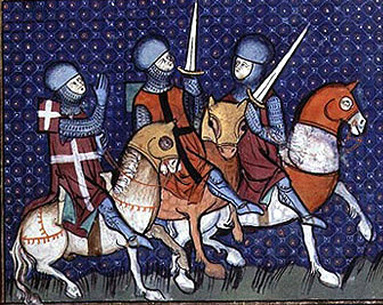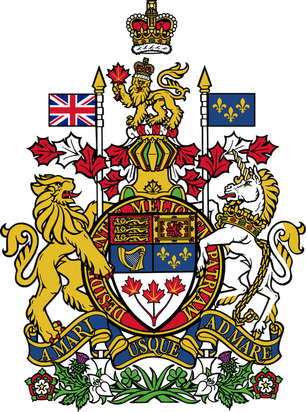Good day, valiant sirs!
During the course of your individual work on this project, you will need to complete a series of challenges relating to your social status and your relationship with the rest of the feudal world of 1207 CE. At this point, you should have completed the background work to better understand the geographic world of the High Middle Ages in western Europe in the 13th century. You should have also decided where your fiefdom is located, your fief’s motto and heraldic colors, and its name. You’ll need to keep that information handy, as you will be using it again during the course of these challenges.
The social world of the feudal High Middle Ages was one which was intensely hierarchical; every person in society had a role, and there really wasn’t a lot of movement within the various divisions of society. If you would like a detailed explanation of the medieval social hierarchy or simply want more information about your social position in general, I recommend watching the following video on the origins of the European social order which persisted up until the French Revolution of 1789 CE. You’re not required to watch this, but it is good information, and might prove helpful in your future work:
During the course of your individual work on this project, you will need to complete a series of challenges relating to your social status and your relationship with the rest of the feudal world of 1207 CE. At this point, you should have completed the background work to better understand the geographic world of the High Middle Ages in western Europe in the 13th century. You should have also decided where your fiefdom is located, your fief’s motto and heraldic colors, and its name. You’ll need to keep that information handy, as you will be using it again during the course of these challenges.
The social world of the feudal High Middle Ages was one which was intensely hierarchical; every person in society had a role, and there really wasn’t a lot of movement within the various divisions of society. If you would like a detailed explanation of the medieval social hierarchy or simply want more information about your social position in general, I recommend watching the following video on the origins of the European social order which persisted up until the French Revolution of 1789 CE. You’re not required to watch this, but it is good information, and might prove helpful in your future work:
|
As a knight, your primary duty is to support your feudal lord through the protection of his land, and– should the king require it– fighting the battles and wars of your sovereign. This is a social and political order based around reciprocity and loyalty, and while your life is more privileged than most, that in no way means your life is without its cares, obligations, and dangers.
Knights’ Challenge First, please download the Knights' Challenge if you don’t have your hardcopy of the handout in front of you. As your first challenge, you will need to:
|
Medieval Naming Conventions
First, a bit of excellent background information from “Common Naming Practices: Being a Brief Guide to Bynames in the Major European Languages and Cultures” by Walraven van Nijmegen (2003).
Parts of names: In the majority of European cultures, personal names contain two basic kinds of name element, given names and surnames.
The given name is so called because the family bestowed it upon the child at birth or christening. Given names may be traditional names in the culture, saints, heroes, honored relatives, and so forth. The pool of given names differs from culture to culture. For example, Giovanni is the characteristically Italian form of John, the name Kasimir is almost uniquely Polish, and use of the name Teresa did not spread outside of Spain until very late [in the medieval period]. Because given names vary so much by place and period, describing them adequately is beyond the scope of this article. However, many collections of given names are available on-line at the Medieval Names Archive.
Surnames are the second major category of name element. Today’s surnames are inherited family names, but for most of [the medieval] period, surnames were not inherited but chosen to describe an individual and distinguish him or her from other individuals with the same given name. Such surnames are called bynames.
Byname origins and meanings: To understand how bynames originated, image that you lived in Amsterdam around 1300. You are listening to a friend sharing local gossip about a man named Jan. Now, one out of every ten people in Amsterdam is named Jan, so how will you know which one your friend means? Is it big Jan who lives at the edge of town? Jan, the butcher? Jan, the son of Willem the candlemaker? You need additional information about who Jan is to identify him, and that is what a byname does.
Bynames show up all over Europe in four basic flavors:
* patronymic – byname that identifies a person’s father. There are other bynames of relationship, but the patronymic is by far the most common of these in Europe.
* locative – byname that identifies where a person was born, lives, or has an estate. These can be formed using a proper place name or a generic feature of local geography.
* occupational – byname that identifies a person’s trade or occupation.
* nickname – byname that describes an individual’s personality, character, dress, physical appearance, or other outstanding trait. These are not chosen by the bearer of the nickname, but by friends, family, neighbors, or enemies, and becomes known through frequent use.
I strongly recommend that you read over the rest of the article, because it does an excellent job of explaining how naming conventions traditionally worked in the medieval period for most people. Additionally, you might find the following sites useful in order to better understand the social order of the medieval world.
- “Medieval Peoples: Titles, Positions, Trades & Classes,” (A useful listing of the various titles and positions available in the medieval world. Specific titles are specified by region of origin.)
- “Medieval Society: The Knightly Ethics,” by Skip Knox. (A really excellent article on the ethos and expectations of knighthood.)
Common Medieval Given Names
You’ll want to make sure that the given name you select is appropriate for the region in which your fief is located, so pay attention to the potential for Germanic, Latin, Celtic, or Norse roots. There’s an excellent site at “Medieval English Names” which might be useful to you, even if your fief isn’t located in England. At any rate, here is a collection of fairly common given names from the 12th and 13th centuries, separated by gender:
Male Names
Adam, Gervase, Gilbert, James, Louis, Ralf, Ademar, Geoffrey, Gerard, John, Walter, Warin, Amaury, George, Bernard, Matthew, Jan, Wulfirc, Alfred, Guy, Nicholas, Lucas, Thomas, Richard, Bernard, Hubert, Aldous, Roger, Simon, Reginald. Charles, Ernis, Henry, William, Percival, Roland
Female Names
Agnes, Agatha, Alice, Avice, Aldith, Astrid, Eva, Beatrice, Elizabeth, Mary, Martha, Philippa, Gilia, Helen, Sybil, Sadie, Lavinia, Isabella, Scholastica, Julia, Margery, Margaret, Molly, Muriel, Joyce, Cecily, Urith, Isolde, Winifred, Grace. Ann, Jane, Katherine, Linette, Wulfhild, Rohesia
creating a coat of arms
A coat of arms includes several elements, but historically they emerged out of a need to be able to identify knights in full armor during a pitched battle. After all, one guy dressed in shiny metal looks much like another– you wouldn’t want to accidentally attack someone who was fighting on your side. Over time, the brightly painted shields became associated with noble houses, and were then incorporated into symbols for important houses. Your coat of arms should include the following elements:
You will want to consult the following sites in order to gain a better understanding of the elements of a coat of arms and how they are traditionally arranged:
- Your fief’s motto and official colors.
- A shield, crest, helm, mantling, and wreath.
- Two supporters on either side of the shield. You may want to use these to represent your kingdom and your noble’s family.
- Your character’s family name.
- A key which explains the symbolism of each element of the coat of arms.
You will want to consult the following sites in order to gain a better understanding of the elements of a coat of arms and how they are traditionally arranged:

